new posts in all blogs
Viewing: Blog Posts Tagged with: cheating, Most Recent at Top [Help]
Results 1 - 13 of 13
How to use this Page
You are viewing the most recent posts tagged with the words: cheating in the JacketFlap blog reader. What is a tag? Think of a tag as a keyword or category label. Tags can both help you find posts on JacketFlap.com as well as provide an easy way for you to "remember" and classify posts for later recall. Try adding a tag yourself by clicking "Add a tag" below a post's header. Scroll down through the list of Recent Posts in the left column and click on a post title that sounds interesting. You can view all posts from a specific blog by clicking the Blog name in the right column, or you can click a 'More Posts from this Blog' link in any individual post.

By: ChloeF,
on 8/1/2014
Blog:
OUPblog
(
Login to Add to MyJacketFlap)
JacketFlap tags:
sport,
athletes,
nutrition,
cheating,
VSI,
hormones,
Very Short Introductions,
milk,
Editor's Picks,
*Featured,
Science & Medicine,
Health & Medicine,
doping,
Sports & Games,
colostrum,
food supplement,
food supplements,
Martin Luck,
performance enhancing,
wada,
Add a tag

By Martin Luck
A recent edition of BBC Radio 4′s On Your Farm programme spoke to a dairy farmer who supplies colostrum to athletes as a food supplement.
Colostrum is the first milk secreted by a mother. Cow colostrum is quite different from normal cow’s milk: it has about four times as much protein, twice as much fat, and half as much lactose (sugar). It is especially rich in the mother’s antibodies (IgG and IgM), providing the newborn calf with passive immunity before its own immune system gets going.
People who take colostrum believe it has health and performance benefits. It’s said to reduce muscle recovery time after intense training, maintain gut integrity against the heat stress of exercise, and assist recovery from illness and surgery. The radio programme spoke to cyclists, rugby players, footballers, runners, and others convinced of its value and who are prepared to pay the significant premium which colostrum commands over ordinary milk.
Unfortunately, the scientific evidence for these effects is rather poor, especially on the health side. Nutritional and clinical scientists who have reviewed the research literature report a lack of well-designed and reliable trials. There is some evidence for enhanced speed and endurance and for increased strength in older people undertaking resistance training, but many studies show equivocal or unconvincing results. So for the moment, it’s probably safest to describe the benefits of colostrum consumption as anecdotal.
Colostrum undoubtedly contains some hormones and growth factors in higher amounts than in normal milk. Levels of insulin and IGF-1 can be eight times higher in colostrum, especially during the first few hours after calving. Growth hormone is also present at this time, and disappears later. Other hormones, including prolactin, cortisol, vitamin D and a range of growth factors (hormones controlling cell division and maturation), also occur at relatively high amounts in colostrum.

Colostrum cakes
These hormones all have well known biological effects in the body, but finding them in colostrum doesn’t necessarily mean that they will be active when it is consumed in the diet. There are two main reasons for this. Firstly, protein hormones like insulin and IGF-1 get broken down in the gut and are unlikely to be absorbed in an active state. (If the reverse were true, diabetics could take insulin in pill form rather than injections.) Secondly, naturally-secreted hormones generally work in concentration-related ways, appearing in the blood as repeated pulses with which their receptors become coordinated. This pattern is unlikely to be replicated by pouring colostrum over the breakfast cornflakes.
Nevertheless, the possibility that colostrum is a source of potentially performance enhancing bioactive materials has been considered by the World Anti-Doping Agency. Many hormones and growth factors including insulin, IGF-1, cortisol and Growth Hormone, appear in their list of prohibited substances. So could colostrum make athletes fall foul of the regulations? The WADA website advises that although colostrum is not banned, its growth factor content “could influence the outcome of anti-doping tests” and its consumption is not recommended.
Aside from efficacy, colostrum poses a wider, ethical question: when does a natural food product become an artificial supplement? At one extreme, it might be feasible to extract the active ingredients and take them as a training aid or performance enhancer. At the other, perhaps as recognised by WADA, one might happen to consume colostrum as a food without intending to benefit unduly from it. Somewhere in between would be the deliberate consumption of colostrum knowing that it contains potentially beneficial components.
But then why is that different from, say, increasing ones intake of protein or energy to support a higher level of athletic performance? Neither whey protein nor glucose, nor for that matter caffeine or bananas, appear in WADA’s prohibited list, yet they all have their place in the training and performance regimes of many athletes and sports men and women.
Identifying hormones as discrete, potentially bioactive chemical components of food seems to encourage the drawing of a false line along this continuum. No one condones cheating or the gaining of unfair advantage, but it is not clear why one food product should be restricted when another is not, especially when it is available to all and has no identified side effects.
But this brings us back to the question of efficacy? Does colostrum really work? If it could be shown that it does and if it were made widely available as a food item, there is no doubt that all athletes would use it. This might make the doping authorities review their position, although it could mean, of course, that no one is really advantaged (just as being tall brings no gain when playing basketball against others selected for their height).
To find out if colostrum really does work, many more well-designed, high quality, double blind placebo-controlled trials would be necessary. Such investigations are expensive and difficult and few organisations will have the expertise or resources to devote to something which, as a completely natural product, is unlikely to bring commercial gain. But this is the problem with many food supplements and so-called superfoods (and partly explains why health food shops abound in the high street).
In the end, people use food supplements because they believe them to work, not because there is much reliable evidence that they do. And perhaps this, in turn, means that there is no legitimate reason for banning their use.
Based at the University of Nottingham as a Professor of Physiological Education, Martin Luck is the author of Hormones: A Very Short Introduction. He was awarded a National Teaching Fellowship by the Higher Education Academy in 2011.
The Very Short Introductions (VSI) series combines a small format with authoritative analysis and big ideas for hundreds of topic areas. Written by our expert authors, these books can change the way you think about the things that interest you and are the perfect introduction to subjects you previously knew nothing about. Grow your knowledge with OUPblog and the VSI series every Friday, subscribe to Very Short Introductions articles on the OUPblog via email or RSS, and like Very Short Introductions on Facebook.
Subscribe to the OUPblog via email or RSS.
Subscribe to only science and medicine articles on the OUPblog via email or RSS.
Image credit: Colostrum cakes, by Surya Prakash.S.A., CC-BY-SA-3.0 via Wikimedia Commons
The post Colostrum, performance, and sports doping appeared first on OUPblog.

By:
Sue Morris,
on 6/5/2014
Blog:
Kid Lit Reviews
(
Login to Add to MyJacketFlap)
JacketFlap tags:
Children's Books,
Picture Book,
Favorites,
children's book reviews,
cheating,
Inc.,
Owlkids Books,
5stars,
Library Donated Books,
The Race,
Édouard Manceau,
caribou,
foot race,
good versus bad sportsmanship,
quiting a game or sport,
Sarah Quinn,
who is the real winner?,
Add a tag
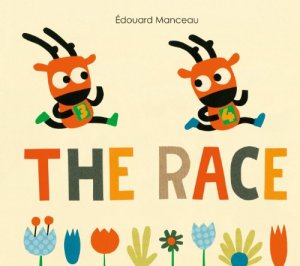 The Race
The Race
by Édouard Manceau
translated by Sarah Quinn
Owlkids Books, Inc. 4/15/2014
978-1-77147-055-1
Age 3 to 7 64 pages
.
“A group of caribou gather to run a race that begins at one line and ends at another. But what happens in between? The caribou engage in some rather outlandish tricks in order to be the first to cross the finish line. But in the midst of this titanic struggle for victory, some of the caribou stop to question the merits of their single-minded pursuit of winning at all costs. Follow this hapless herd of caribou in a race to the finish. Who wins? You decide.”
Opening
“It begins with a guy, a can of paint, and a paintbrush.”
Review/The Race
One inventive caribou lays down two lines: one at the beginning and one at the end. He picks up a megaphone and shouts to the racers, who are limbering behind the start line. Six caribou—male, in case you were wondering—warm-up for the race. The starter’s gun gets the racers ready, and set, and number 4 takes off! Unbelievable. Unheard of. Under the starter’s gun, number 4 is marched back, front legs in the air.
The idea of six caribou racing from one line to another line is silly. They have a number stuck to their belly and wear running shoes of assorted colors. The hard-working caribou that painted the lines, and holds the starter’s gun, looks angry. Maybe because he’d rather race than officiate, but he cannot. It would be improper. A conflict of interest. A sure —“BANG!”
Number 5 jumps into the lead, the others not far behind. Wait, what is that in number 5’s hand? Why it’s a . . . Oh, no! The back five tumble into each other. A caribou-clog stops all traffic on the track; they are the traffic on the track. Now number 5 has an insurmountable lead. Even quick caribou couldn’t overtake him now. Wait, what is that? It’s a motto.
“Quitting is not an option!”
I love the scene where the five clumsy caribou sit on the sideline, tended to by caribou doctors. I mean, doctors who are caribou. One listens to a heart, another glues—gorilla glues—an antler that snapped in two, while the third sports scissors and orange gauze, wrapping up bruises, and gashes, and sprains, and anything else you can imagine are under those bandages. Amid all the broken caribou and the medical supplies is the cause of the caribou clog-up; the thing number 5—and they are off!
Number 6 takes a fast second place. Wait, now what is on the course? A green truck!? Great, the caribou will be hit, clog up the racecourse, and need more medical attention. Where is the lead caribou? Oh my, the injured racers are all kiting toward him. Flying closer and closer, the five straggling racers have surpassed number 5! WAIT! Why are they stopping for water . . . fish . . . electrolytes? Number 5 is sure to retake the lead. Where is number 5? He’s where . . . up there!? Looks like number 5 is out of the race, folks.
One of the funniest things about The Race is the twists and turns that pop out of nowhere. The caribou all want to win, no matter the cost. They are making bold moves, possibly illegal-to-caribou-racing moves. Young children will love The Race. Zany and fast paced, the illustrations tell the majority of the story. Each spread has only one or two sentences. For example, here is the start of the race:
“That brings a bunch of other guys who start bending and twisting.” [spread 3]
“Then the first guy comes back with a pistol, and everyone freezes.” [spread 4]
“Sometimes, one of them tries to get away.” [spread 5]
“It doesn’t usually take long to catch him. That’s called a false start.” [spread 6]
The words don’t always seem related to the action. The above example could have been a criminal line-up as easily as the start of a race. I like how that possible confusion emphasizes the role and importance of illustrations in picture books. The two parts — Look, someone took off, leaving the refueling station and the rest of the racers behind! He is quickly moving away. Look at that lead! Wait, here come the rest, led by number 3 holding an empty bottle in his hoof. With one eye patched—after the caribou clog up—it is quite possible he will miss number 4. Oh, but look! Right behind 3 is number 1 carrying a fish, and he is not eating it.
Number 6 finishes his drink on the run, then he and number 3 shove those bottles onto number 4’s antlers. Number 3 takes the lead with 6 on his hoof “heels.” What a caribou. Numbers 1 and 2 pull up the rear. Number 2 has avoided last place all race. Wait! Number 1 surpassed number 2! Poor number 2, he looks so pooped. Look! He tore off his number. The caribou is hoofing it home. He quit.
If they are extremely competitive, from sports or video games, kids might call that caribou a quitter. I don’t think he is a quitter. Did he really quit or decide racing is not for him? He went home, spruced the place up, and now enjoys himself and his home. He did take number 2 home for a souvenir. It lays on his —Number 4 is in a hole! Number 6 looks on viciously at the top-heavy caribou. That caribou is as mean as he looks. What is he doing to . . .
Phew! A review amidst a race makes for a long post. I think I will stop now. You’re welcome.
Messages. The Race’s messages include whether winning at all costs is worth the win. Is hampering the other players with tricks so you can win fair play? Who really won this race? The first banged up racer to cross the finish line or the racer who realized it was not worth the cost and quit? I coached kids for seven years and know the players’—and parents’—win-at-all-cost attitudes often harms the child. Kids are better off learning to enjoying the journey—while playing hard, trying to win—win or lose. Not everyone can win all the time and not everyone deserves a trophy. That’s life. Games are a way to prepare kids for adult life. Many of those caribou will end up in caribou jail if they live as they played.
When The Race arrived, I quickly read it, as I do all picture books. Then I read it again. Then I shared it. I think The Race is a hoot. Messages aside, The Race has multi-level humor that “cracked me up.” Kids and parents will adore this book. Not only will parents not mind repeat readings, kids will read it on their own, using their imagination to “write” the text as they read. Those stories might be the best as the child makes The Race their own.
THE RACE. Text and illustration copyright © 2012 by Édouard Manceau. Translation copyright © 2014 by Sarah Quinn. Reproduced by permission of the publisher, Owlkids Books, Inc., Berkeley, CA. **Originally published in France under the title La course in 2012 by Éditions Milan.

original cover
.
.
Buy your copy of The Race at Amazon —B&N—Owlkids Books—your local bookstore.
—B&N—Owlkids Books—your local bookstore.
.
Learn more about The Race HERE.
Meet the author/illustrator, Édouard Manceau, at his website: http://edouardmanceau.blogspot.com/
Meet the translator, Sarah Quinn, at her website:
Find top-notch books at Owlkids Books, Inc. website: http://www.owlkidsbooks.com/
.
Also by Édouard Manceau
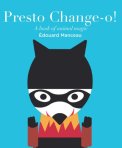
Presto Change-O: A Book of Animal Magic

Hatch, Little Egg

Windblown
.
.

Édouard Manceau, author/illustrator
.
.
Since 1999, Édouard Manceau has been an author and illustrator.
He draws for the press, publishes games, and books for children from two years.
Édouard has published over a hundred children’s books so far, translated into many countries.
.
.
*The jump in review number is due to reviews never numbered from last year. Everything is correct.
If you noticed that the review number jumped up a few, you are very astute. I am not. I missed several reviews that had a title other than a book title. Noticed one, so I checked them all. Now I am on review 581. Not fudging the numbers, but rather fudging up in my counting. So sorry if this caused you any mathematical harm, as none is intended.
Filed under:
5stars,
Children's Books,
Favorites,
Library Donated Books,
Picture Book Tagged:
Édouard Manceau,
caribou,
cheating,
children's book reviews,
foot race,
good versus bad sportsmanship,
Inc.,
Owlkids Books,
quiting a game or sport,
Sarah Quinn,
The Race,
who is the real winner? 







First, let me ask: When did we, as a people, stop caring about doing what's right and start only thinking of ourselves?
I know I am generalizing, but I am bombarded daily with acts of selfishness and buffoonery that show no compassion or consideration. I know there are good people in this world (I try to be one of them). Still, my sense of justice is assaulted constantly by those that simply don't care.
With that out of the way, let me get to the reason I asked you here. There is a certain high school student, let's call him P, to maintain his confidentiality. P stands for Pinocchio because this student does not lie, fib, or even swear. His moral compass makes mine look like a Cracker Jack toy.
P is in a predicament. In one of his classes, it seems that the majority of classmates are OK with cheating. Over the past several weeks, they have been sharing answers to quizzes and tests, going so far as to text them or write them on the side of a coffee cup. Worse yet is that they are getting these answers from a Teacher's Aid. In case you don't know, a Teacher's Aid is supposed to be a student of strong character entrusted with helping the teacher. In this case, the Aid is helping other students cheat.
P has a problem. He does not feel he can go to the teacher or administration about this. P is worried about repercussion from his fellow students. In this age group and moral climate, repercussion could easily become physical. P also does not feel he has the support of the administration. Previous experience proves as much in a case where he tried to resolve something anonymously and then the teacher (different than the one above) singled him out to the class because that teacher had some backlash from administration. I should also mention P was a victim of bullying at a younger age. Administration did nothing in that case either, so P has little faith in them and knowledge of the capabilities of his classmates.
What is P supposed to do? What would you do, as a parent or student? It is possible that the teacher won't find out and nothing will happen. If the teacher becomes aware and P does not step forward, what happens? Is P's silence self-preservation or complicity?
I invite comments, suggestions and debate on this topic. Please post comments on this blog, share on Facebook or email me.
By: Stacy Dillon,
on 8/11/2013
Blog:
Welcome to my Tweendom
(
Login to Add to MyJacketFlap)
JacketFlap tags:
2013,
Friendship,
social justice,
reluctant readers,
Roaring Brook,
illustrated novels,
activism,
summer reading,
cheating,
summer camp,
Add a tag
I figured this was fitting to post today as I am sending my own 10 year old off to sleep away camp today!
Resident non-reader Charlie Joe may just have gotten himself in over his head this time. In a moment of temporary craziness and trying to please his parents, Charlie Joe agreed to 3 weeks at a camp for smarty pants kids. Camp Ritubukkee. Pronounced Read-a-Bookie. For real. Now that the time has come, he is pretty much in shock about the whole thing. At least his bud Katie Friedman will be there, and Nareem from school will be there too.
The camp schedule is filled with "workshops", which Charlie Joe knows is just code for classwork. He cannot believe that kids actually acquiesce to go to what is essentially summer school. Charlie Joe is also a bit bummed because he had just started hanging around with Zoe, and if he had the summer off like a normal kid, that might just have gone somewhere.
Charlie Joe doesn't exactly get off the a stellar start at camp. At school kids know him and know that he wields his sense of humor like a finely sharpened sword. Here, his anti-reading stance and his sarcasm aren't appreciated. Charlie Joe decides that it's going to be in everybody's best interests for him to try to de-dorkify these kids...get them to relax a little bit and enjoy the summer.
What Charlie Joe doesn't expect is to get sucked into the world of reading (just a bit), to use his devious brain for the greater good, and to genuinely like some of these campers.
Tommy Greenwald has created a reluctant reader character who is incredibly authentic. Charlie Joe doesn't have trouble reading, he just can't be bothered. I know several kids like this. By putting Charlie Joe in a camp with kids who pretty much adore learning, there is super wide appeal to this title. The writing is tight, the voice is authentic and I love the fact that unlike other series that aim for this audience, Charlie Joe isn't mean. I had the pleasure of meeting Tommy at ALA in Chicago this summer, and was super pleased to relate the story of my own real life reluctant reader really taking to this series. When kids want a step up from the Wimpy Kid titles, send them over to Charlie Joe!
By Eric Anderson
Sexual taboos are falling in Western cultures. Largely due to the Internet, today’s youth take a much more sex-positive view to what comes naturally. They have shed the fear and misconception of masturbation. They enjoy a hook-up culture, where sex is easier to come by; there is less of a double standard for women who also enjoying these freedoms. Pornography is commonplace, with most boys seeking it out around 11. It has withered from moralistic Victorian ideals of heterosexual, missionary ‘sex’ to LGBT pornography, which youth today view, demystifying what their parents so feared. This has even opened the development of heterosexual men receiving anal pleasuring.
Despite all of this social-sexual progress, our pornified culture has yet to erode the sexual taboo of engaging in — or even admitting to desperately wanting — sex with someone other than one’s monogamous partner. Monogamy is so esteemed it remains virtually compulsory in our relationships.
But despite its cultural esteem, there are faults with the practice; problems covered by a culture unwilling to ask critical questions about it. Monogamy’s regard is maintained through multiple, robust cultural myths in the forms of both a carrot and a stick.
Young men entering into romantic/sexual relationships are misled into thinking that monogamy is capable of providing them with a lifetime of sexual fulfilment and that if they truly loved their partners they would not desire others. This, we are told, is because monogamy is healthy, proper, moral, and natural. Anyone deviating from or challenging this script is stigmatized.
We must hold monogamy, not only cheating, to a critical light. We must expose the myths supporting monogamy, especially for young men who have grown up with easier access to sex, a panoply of pornography, and a greater number of sexual partners before finding love. Let us examine the stages of a monogamous relationship:
(1) Young men enter into romantic relationships believing in the myths of monogamy. Many men have come from families broken by cheating, and they don’t want to be ‘that guy.’ They believe that if they love their partners, they will be sexually satisfied with them in perpetuity.
(2) Despite this belief, sexual habituation sets in quickly. Attempts to spice-up one’s sex life normally occur about the time a couple enters into the emotional storming stage of a relationship: three months. But despite these attempts, the veracity and frequency of sex declines within a few months.

(3) The relentless urge to have sex with someone else grows stronger as the emotional strength of the relationship develops. Young men who fail to love their girlfriends or boyfriends aren’t compelled to stay with their partners. Instead, they are culturally free to leave their partners. But men don’t leave their partners because of waning sexual desires alone; they love their partners and do not wish to leave them. They simply want sex with someone else to fulfill their somatic desires while keeping their emotional relationships intact.
(4) Men begin to resent their partners. When every cell in their body is craving sex with someone else, monogamy begins to feel like sexual incarceration. Men want to escape, and, to some extent, their inability to do so is taken out on their partner, who is viewed as keeping them sexually incarcerated.
(5) Men must decide. Do they break up with their partners so they can have sex elsewhere? Tell their partners that they desire a sexually-open relationship? Discuss their sexual desires with their partners but not ask for an open-relation
Well, for anyone who does not know what this is all about, please go to Amazon and look for Everybody Masturbates. I am not recommending you purchase this, nor do I profit from the click if you do. It may be a cute little book, yet I now have reservations. The author, Mr. Christian YoungMiller, [...]
By:
smmorris,
on 5/12/2011
Blog:
Kid Lit Reviews
(
Login to Add to MyJacketFlap)
JacketFlap tags:
Favorites,
Tweens,
lying,
stealing,
middle grades,
cheating,
know-it-all,
bully,
4stars,
tattletales,
Add a tag
4 STARS Phillip Isaac Penn, who goes by the nickname “PIP,” shares a week of his error prone life where he seems to hear his name as more of a shout than anything else. He awakes to the sounds of his mother calling out, “Pip!” Then dad chimes in with “Pip.” And then sister yells [...]

By: Venetia Butterfield,
on 5/7/2009
Blog:
The Penguin Blog
(
Login to Add to MyJacketFlap)
JacketFlap tags:
Books,
community,
Games,
publishing,
fashion,
quizzes,
new books,
Current Affairs,
prizes,
cheating,
Particular Books,
outings!,
hidden genius,
pub facts,
stolen victory,
worth watching University Challenge all the time,
Add a tag
The gloves were off last night, as Particular Books launched with a head-scratching, brain-teasing, knowledge-dredging Quiz to End All Quizzes at the Ivy House in Holborn. The six-man teams included booksellers and Penguins alike, and ranged from Occasionally Right (Rights), Economic Collapse (Finance) and www.winners.com (Online), to the heart-breakingly named Hopefully Better Than Waterstone's.
The first round – English Countryside – had us baffled with questions about swan-upping, but reassured us when our teams got the correct answers for questions about a man being buried with his heart in a biscuit tin (Thomas Hardy) and the misconception of Gypsy provenance (Egypt). The Pubs round brought the teams close to fisticuffs, with quotes from Coleridge, Churchill and Ogden Nash, and all the teams frantically trying to remember the words to Pop Goes the Weasel (fact lovers: it references The Eagle on City Road). Round 3, a fashion round, introduced quizmaster extraordinaire Simon Winder to the world of Jefferson Hack, Kanye West and Milla Jovovich, and made us all resolve to wear a little more colour, a little wilder heels, and accessorise a little neater. Just as long as we can name which film Lauren Hutton starred in alongside Richard Gere in the 80s (American Gigolo. Yesssssssss.) The Weird English Words in round 4 introduced us to B.U.R.M.A., a baby oyster (a spat), the oche and the hiphop female equivalent of 'pimpjuice' ('Milkshake', apparently. Discuss). Aaaand... relax.
Ten minutes to scoff some delicious Thai food, and then onwards into battle. The fifth round, titled 'Q & U', baffled some team-members. After answering 'lacquer', 'Quebec' and 'equals sign' for previous answers, one of our group decided the answer to 'A traditional lawn game involving the throwing of a metal or rubber ring to land over a pin?' was hoopla. Weak. Link.
The Animal Names and Facts of the sixth round gave me enough fascinating facts to bar me from a pub for a month. (Did you know that the deadliest marine animal is the box jellyfish? And that George Washington's teeth were made from hippo tusks? Or that itching powder is made from tarantula hair? Or that the only domestic animal not mentioned in the Bible is the cat?) The final round saw us reaching deep into our GCSE memories to recall how French we were, with questions ranging from the most hated man in French schools (Charlemagne – he invented school) to the Four Musketeers (no, none of them was called Dogtagnan). Having been in the top three for much of the night, we were cruelly pushed into fourth place, and victory was snatched from the Colophon of Publishers by the seven-strong team, Bardini the Magnificent. 
If I've learnt anything from the night it's that a gricer is a trainspotter, Shakespeare's father was an ale-inspector, and I shouldn't do pub quizzes with anyone I have to face the next day.
Sam the Copywriter
So hey this is barely library related. I was reading library_mofo and saw someone complaining about Oprah. Yes Oprah the lady who seemed to have single-handedly revived reading in some circles. I didn’t understand the problem. Apparently somehow Oprah was telling people to go get a coupon for free chicken at KFC. This was a problem at libraries for some reason. I investigated further.
Turns out, you go Oprah’s site and then to this page and have one day (now only a few hours, maybe not even okay anymore depending when you read this) to print up to four coupons to get a free meal. Actually now that I go there I get message that “Our partner, Coupons, Inc. is experiencing an exceptionally high volume of traffic to the site right now. Please check back soon to get your coupon. Sorry for any inconvenience.” Color me surprised.
That brings me to my next point. This isn’t just a coupon on a page that you can print, this is a coupon system which involves downloading… something … to your computer (mercifully available for Mac/Win, don’t know about Linux, I assume not). Once you have downloaded and installed the something, you can then click the “Print coupon” link which will load the coupon on to a web page as a PDF and allow you to print it with a special barcode. Photocopied coupons are, for some reason, not acceptable at restaurants. I could not get it to easily work with Firefox but it was a breeze with Safari and I assume the Firefox issue was mine alone.
So, people without printers head to the public library to get a coupon for a free meal. You can use a printer at the public library, yay for the library! They can’t do this for any number of reasons up to and including
- They can’t download the application to a library computer because of library policy
- They can’t download the program to the computer because the website is being flakey
- Coupons Inc is down
- They manage to download the application and get to the “print coupon” link only to wait forever and have no idea if their coupon is printing or not
- The “you are limited to four downloads of this coupon” restraint is somehow per computer which means the first four people are lucky, the rest not so much
Yes that’s right, it’s the coupon so popular and so buggy they had to create a FAQ for it. Do people look at this fiasco the way I do, as an well-meaning but ill-conceived program that uses a lot of stupid middleware to prevent fraud that mostly managed to tank itself due to overpopularity and complicated implementation? No, they think the library isn’t the place to go for printing. Or that librarians can’t solve technical problems as easy as printing a coupon from a website, so the next time they have a coupon to print, they’ll go elsewhere. Or that computers are hard.
This system encourages cheating. It complicates what should be a fairly straightforward computer activity for no particularly good reason. What do you suppose happens if you show up at KFC with a photocopied coupon? What happens when you print more than four coupons? Thanks for reminding me that “Coupon fraud is punishable by law.” If I ever get this website to load again, I’m printing 100 coupons and you can take me to jail. The nearest KFC to here is 21 miles anyhow. Boy am I glad I’m not working at the library today.

By: Rebecca,
on 3/27/2008
Blog:
OUPblog
(
Login to Add to MyJacketFlap)
JacketFlap tags:
reading,
women,
oxford,
language,
men,
A-Featured,
Lexicography,
Dictionaries,
Media,
english,
OED,
dictionary,
cheating,
Ammon,
Shea,
spitzer,
Add a tag
Ammon Shea recently spent a year of his life reading the OED from start to finish. Over the next few months he will be posting weekly blogs about the insights, gems, and thoughts on language that came from this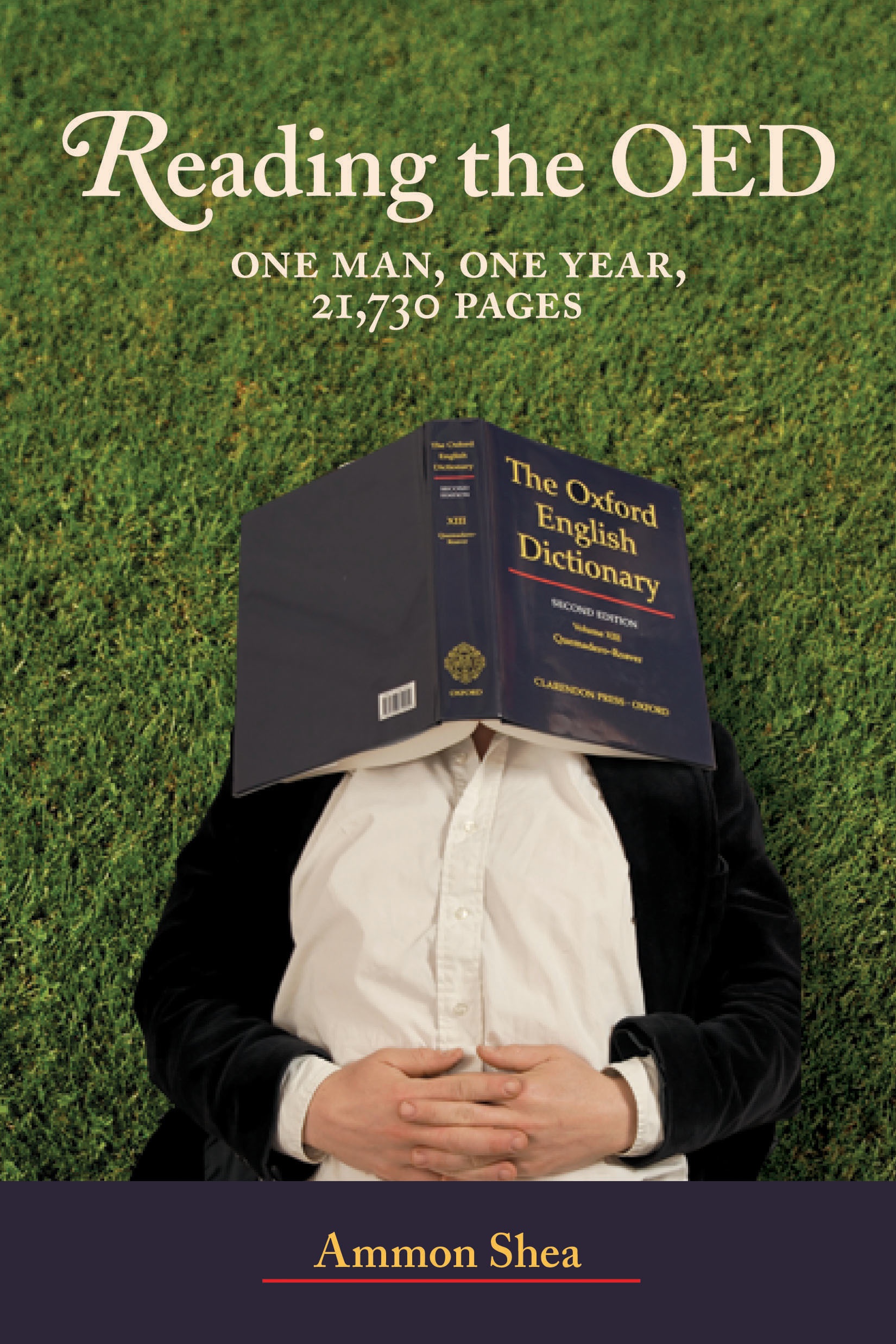 experience. His book, Reading the OED, will be published by Perigee in July. In the post below Ammon looks at words for cheating.
experience. His book, Reading the OED, will be published by Perigee in July. In the post below Ammon looks at words for cheating.
Examining the recent activities of certain political figures, one might have the thought that the phenomenon of men cheating on their spouses is far more common than the reverse. And if this is the case, our language would certainly reflect this in its vocabulary, right? Wrong.
In some ways this theory is not surprising. It is tempting to assume that a group’s habits and environment will dictate the vocabulary of their language, which perhaps explains the tenacity of the myth that the Inuit have 217 (or some such number) words for snow. However, the vocabulary of a language does not always provide a perfect reflection of the culture of the people who speak it. (more…)
Share This
The Texas Library Association is auctioning an original piece of picture book art by Diane Stanley. The image is taken from Charles Dickens: the Man who had Great Expectations, by Stanley Peter Vennema (now, sadly, out of print.) For your chance to see the image and print a raffle ticket, visit the Itsy Bitsy Gallery.
By:
crystal driedger,
on 2/1/2008
Blog:
Scribbled Business
(
Login to Add to MyJacketFlap)
JacketFlap tags:
edmonton,
silent auction,
silent art auction,
edmonton humane society,
art auction,
illustration,
art,
charity,
art auction,
edmonton,
silent auction,
silent art auction,
edmonton humane society,
Add a tag

Last year I had an idea to raise funds for the Edmonton Humane Society (they are building a new shelter for their animals, called the Margaret Chapelle Centre for Animal Care, named after an Edmonton Artist who gave the largest dontation in history to a Canadian Animal Shelter). I thought: "What if I could gather a group of artists that would create art featuring shelter animals and hold a gala which people could come and bid on said art?"
Well, after much planning and hoping, the gala is going to happen! Held at the beautiful Mayfield Inn in Edmonton on April 12, 2008. It's going to be in conjunction with Coventry Homes for Hounds and the seats are are going to sell out fast. To purchase tickets please contact Leslie or Kara. Please keep in mind that you'll have to pay via cheque or cash (made out to Homes for Hounds).
These fine artists & illustrators have been invited to participate:
Michelle Schwengler, Amanda Woodward, Igor Woroniuk, Nicola Pringle, Rachelle Miller, Suzanne Stevens, Marcus Cutler, Drury Stratiy, Amie Kerman, Danielle Inglesias and Michelle McBride.
I've chosen a rather fluffy black and white cat called Barnes and have already started painting his portrait (I forgot he didn't have a tail so when I went in to photograph him again I was quite surprised... needless to say I'll be painting his tail out of the picture, poor chap!).

Here's the real guy! So shy, but so big and fluffy and huggable!
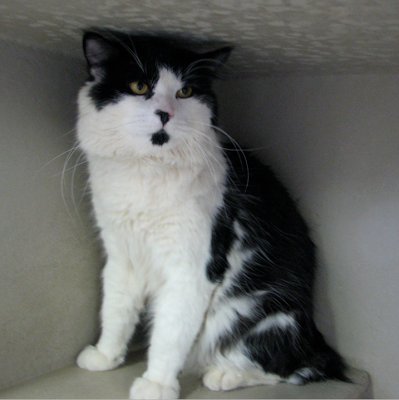
At long last, Robert's Snow returns! For those of you who don't remember, Robert's Snow is a fundraising auction for the Dana Farber Cancer Institute, begun by Grace in 2004. Hundreds of children's book illustrators have donated hand painted snowflakes to be auctioned off for the project.
Last year the project was on hiatus, but this year it is back, this time organized by Dana Farber (and not us). All of us BRG's who are illustrators will be donating however- and the deadline to finish the flakes is tomorrow. I'm headed over to DF today to drop off my flake (you can click on the image below to see a larger version).
Stay posted for more updates on the project as the date for the auction draws closer. There will be opportunities to view all the snowflakes, and of course own your own piece of children's book art!
Read more about the project here.
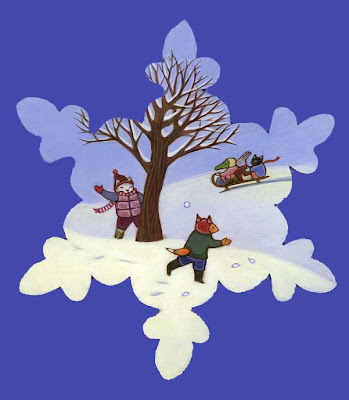

















I've listened to all of the Charlie Joe books-- I've been very impressed. After CJJGTSV, I listened to Patterson's new Middle School book about summer camp. I much prefer Greenwald! Much more positive, and doesn't appeal to the potty and other low brow humor, yet I think kids will still enjoy it.